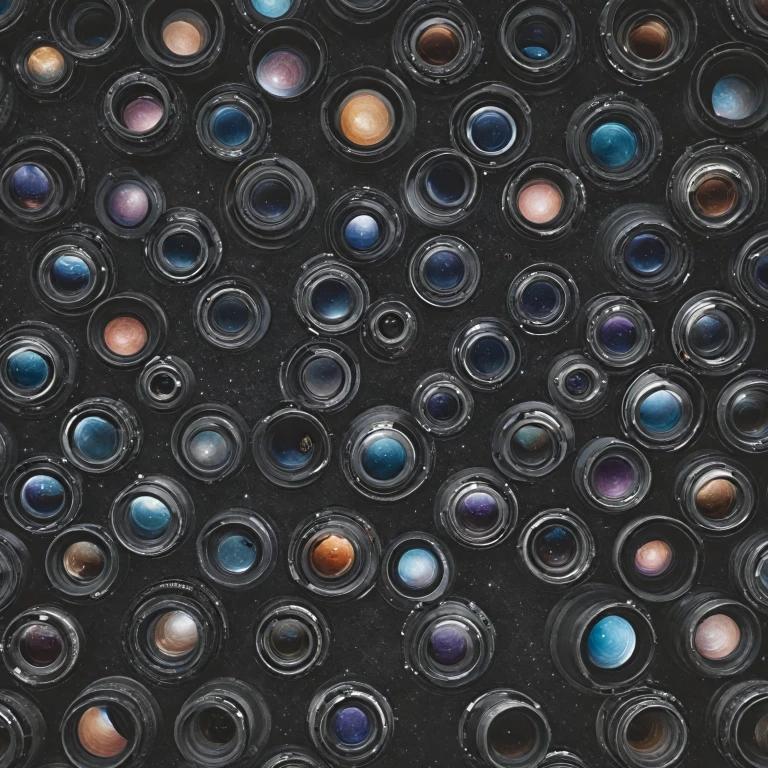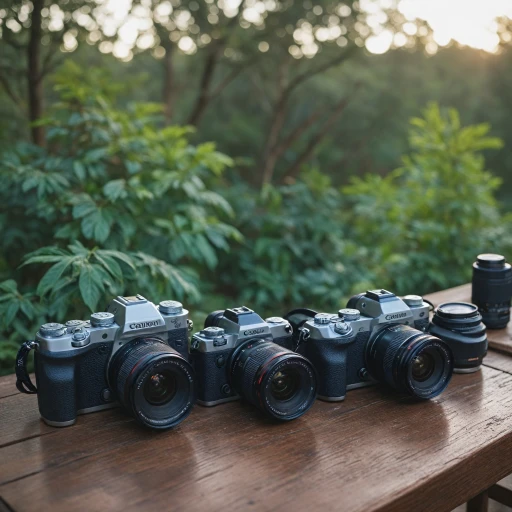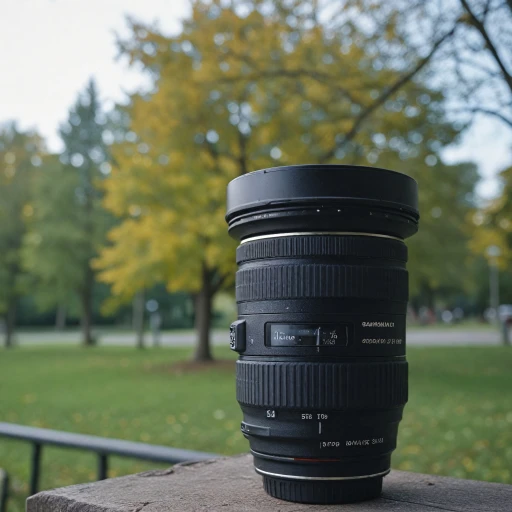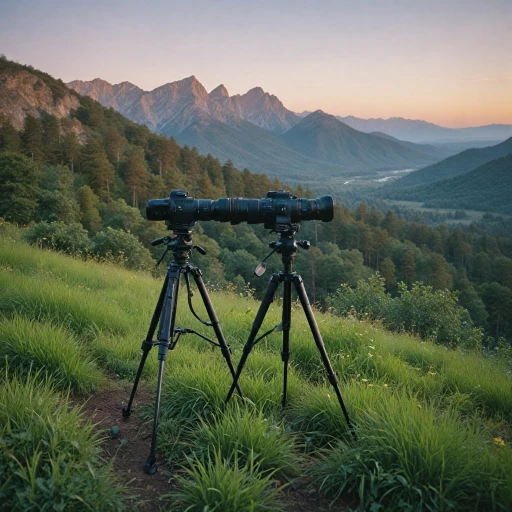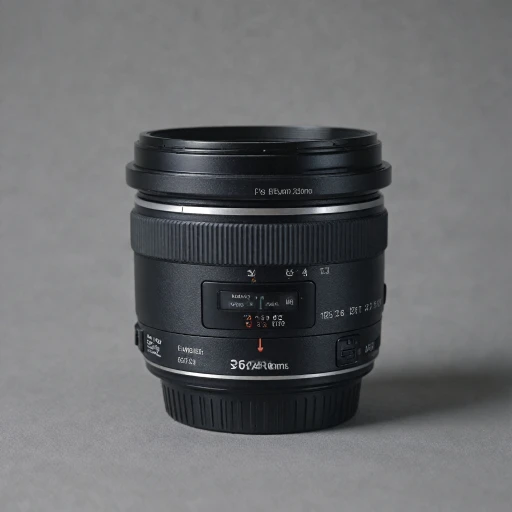
Understanding Telescope Lenses for Nikon Cameras
Decoding the Fundamentals
For those venturing into the realm of digital photography, particularly with Nikon cameras, understanding the variety of lens options available is crucial. Nikon offers a diverse range of telescope lenses designed to meet different photographic needs. These are widely recognized for their unmatched quality and precision.
Lenses for Nikon cameras, such as the well-acclaimed Nikkor series, are designed to suit diverse applications. They are tailor-made to fit different Nikon mounts, ensuring a seamless interface with your camera body, whether you are using DSLR or mirrorless cameras.
Navigating Different Lens Types
When it comes to telescope lenses, you will encounter terms like telephoto, zoom, and prime lenses. The telephoto lens is excellent for capturing distant subjects with clarity, while zoom lenses offer versatility by allowing you to adjust the focal length without changing the lens. Prime lenses, on the other hand, provide exceptional quality with a fixed focal length.
Those looking to make a purchase can find a wide variety of options online, including popular platforms like Amazon, which often offer free shipping on lens purchases. Knowing your camera type, whether it's a Nikon DSLR or mirrorless, will guide you in selecting the appropriate lens type and model. Understanding these differences is the first step towards mastering your photography skills.
Focusing on Compatibility and Performance
Focal length and image stabilization are key factors in choosing a lens that aligns with your shooting style. For photographers prioritizing clarity and precision in capturing distant subjects, a telephoto zoom lens might be the best choice, especially when it features built-in image stabilization.
Moreover, brands like Sigma offer lenses compatible with Nikon mounts, providing additional options for those exploring various photographic techniques. A comprehensive Nikon review can help you decide on the right lens by offering insights into the strengths and limitations of different models.
In conclusion, gaining a clear understanding of these aspects will arm you with the necessary knowledge to enhance your photography journey. For more insights on choosing the ideal lens for nature videography, you might find this guide helpful, although it focuses more on Sony cameras, the principles remain relevant across brands.
Key Features of Nikon Telescope Lenses
Features that Set Nikon Telescope Lenses Apart
When it comes to camera lenses, Nikon has long been a name synonymous with quality and innovation. The brand Nikon extends its excellence to telescope lenses, offering features that cater to both professional photographers and amateur enthusiasts. Here's what makes Nikon's telescope lenses stand out in the crowded market:- Precision Focus: Nikon is renowned for its precise focus mechanisms, ensuring that the object of your photography desires is captured with clarity. The advanced focusing technology allows for seamless transitions, ideal for both telephoto and prime settings.
- Superior Image Stabilization: Stability is key when it comes to long focal lengths. Nikon lenses are equipped with image stabilization that minimizes blur, a crucial feature for capturing sharp images without the need for a tripod.
- Robust Build Quality: Boasting a rugged construction, Nikon telescope lenses are designed to withstand harsh environmental conditions, making them a great choice for outdoor photography.
- Versatile Mount Options: Nikon offers a wide range of mount options that are compatible with both their DSLR and mirrorless cameras, ensuring seamless integration with your existing gear.
- Wide Range of Zoom Lenses: From the budget-friendly options on Amazon to the high-end super telephoto lenses, Nikon caters to every price range with its extensive catalogue of zoom lenses. This variety makes it easier to find a lens that fits your specific photography needs.
- Compatibility with Full Frame Cameras: Nikon's telescope lenses are optimized for full frame cameras, providing photographers with the ability to capture images with rich detail and color depth.
Benefits of Using Telescope Lenses in Digital Photography
Advantages of Integrating Telescope Lenses in Photography
Using telescope lenses in digital photography can significantly enhance your photographic capabilities, especially when paired with Nikon cameras. These lenses allow photographers to capture distant subjects with remarkable clarity and detail, making them ideal for wildlife and sports photography. Here are some key benefits:
- Extended Focal Length: Telescope lenses provide an extended focal length, allowing photographers to zoom in on subjects that are far away. This is particularly useful for capturing images of wildlife or celestial bodies.
- Improved Image Quality: With advanced optics, Nikon telescope lenses deliver superior image quality, reducing chromatic aberration and enhancing sharpness.
- Versatility: These lenses are compatible with various Nikon mounts, including DSLR and mirrorless cameras, offering flexibility for different photography styles.
- Enhanced Focus: The ability to achieve precise focus is crucial in photography. Nikon's focus technology ensures that even at long distances, the subject remains sharp and clear.
- Image Stabilization: Many Nikon lenses come equipped with image stabilization features, minimizing the effects of camera shake and ensuring crisp images even at extended focal lengths.
For photographers looking to enhance their photography further, combining a telescope lens with a sturdy tripod can provide stability and precision, especially in challenging shooting conditions.
Choosing the Right Nikon Telescope Lens for Your Needs
Identifying Your Photography Needs
When selecting a Nikon telescope lens, the first step is to understand your specific photography needs. Are you looking to capture distant wildlife, or are you more interested in astrophotography? The type of subject you aim to photograph will significantly influence your choice. Consider whether you need a telephoto lens for long-distance shots or a prime lens for sharper images.
Evaluating Lens Specifications
Once you have a clear idea of your needs, delve into the specifications of different Nikon lenses. Pay attention to the focal length, as it determines how much of the scene will be captured. A longer focal length is ideal for distant subjects, while a shorter one suits closer subjects. Additionally, consider the aperture size, which affects the amount of light entering the lens and the depth of field.
Compatibility with Your Camera
Ensure that the lens you choose is compatible with your Nikon camera. Check the Nikon mount type to avoid any compatibility issues. Whether you own a DSLR or a mirrorless camera, the mount type is crucial for seamless integration. Nikon Nikkor lenses are known for their compatibility with a wide range of Nikon cameras, but always double-check before purchasing.
Budget Considerations
Price is a significant factor when choosing a lens. While high-end lenses offer superior quality, there are budget-friendly options that provide excellent performance. Platforms like Amazon often have competitive prices and offer free shipping, making it easier to find a lens that fits your budget.
Exploring Lens Brands
While Nikon lenses are a popular choice, don't overlook other reputable brands like Sigma, which offer quality alternatives. Reading Nikon reviews and comparing them with other brands can provide insights into the best lens for your needs.
Additional Features
Consider additional features such as image stabilization, which can be crucial for reducing blur in handheld shots. A zoom lens offers flexibility, allowing you to adjust the focal length without changing lenses, while a super telephoto lens is perfect for capturing extreme distances.
By carefully considering these factors, you can select a Nikon telescope lens that enhances your digital photography experience, ensuring you capture stunning images every time.
Tips for Maximizing the Use of Nikon Telescope Lenses
Strategies to Optimize Lens Performance
When you're diving into the world of Nikon telescope lenses, understanding how to maximize their use can enhance both the quality and impact of your photography. Here are some practical tips to help you get the most out of these specialized lenses:- Proper Mounting: Ensure that your Nikon lens is securely mounted to your camera body, whether it's a Nikon DSLR or a Nikon mirrorless model. A secure mount reduces vibrations, making images sharper, especially when shooting with super telephoto lenses.
- Experiment with Focal Lengths: Nikon lenses offer a range of focal lengths that can be used to your advantage, from telephoto to zoom lenses. Understanding the ideal focal range for different situations enables you to capture the best frames, whether you're photographing wildlife or astrophotography subjects.
- Invest in Image Stabilization: Many Nikon and NIKKOR lenses come with image stabilization, which can significantly reduce camera shake, especially with full-frame and telephoto zoom lenses. This feature is particularly useful for handheld shots or in low-light environments.
- Mastering Focus Techniques: Whether you're using a prime lens or a zoom lens, understanding focus techniques, such as manual focus and autofocus modes, will help you capture sharp, clear images. Adjusting focus for specific environments, like fast-moving subjects, ensures your final photo maintains its clarity.
- Utilizing the Environment: Certain lenses, such as the Sigma line, can provide unique opportunities to play with background elements and lighting. Consider how you utilize environmental factors when setting up shots, as this can greatly enhance the aesthetic of your photography.
- Regular Maintenance: Regular cleaning and maintenance of your lens is crucial to maintaining its functionality and performance. Dust and debris can trouble the lens operation and image quality. Use proper cleaning kits and get professional servicing as needed.
Common Challenges and Solutions with Nikon Telescope Lenses
Overcoming Common Difficulties with Nikon Telescope Lenses
Using Nikon telescope lenses can revolutionize your photography, but they also bring certain challenges. Being aware of these difficulties can help you manage them effectively and get the most out of your investment.
Handling Focus Issues
Achieving precise focus can be tricky with telephoto lenses, due to their narrow focal length. To address this, take advantage of your camera's autofocus capability, but also be ready to switch to manual focus when necessary. Many Nikon DSLR and mirrorless cameras offer focus peaking to assist in achieving sharp focus, especially when using a telephoto zoom lens.
Stability and Image Quality
Due to their size and weight, maintaining stability when using super telephoto lenses can be challenging. Utilizing image stabilization in your lenses and cameras helps, but pairing these with a sturdy tripod is crucial. While mirrorless cameras can help reduce camera shake due to their lighter weight, consider mounting your lens on a tripod for additional support.
Lighting Challenges
Telephoto lenses often require more light to achieve the best results. Shooting in optimum lighting conditions or adjusting the camera's ISO settings can help mitigate low-light issues. Prime lenses and those with wider apertures offer advantages in these scenarios, providing better depth of field control and allowing more light capture.
Mastering Your Photography Kit
After acquiring a suitable Nikon Nikkor or sigma lens, ensure your entire setup complements it. The right combination must include compatible Nikon mount features, lens focal adjustments, and camera sensors. By equipping yourself with these solutions, you can unlock the full potential of your Nikon telescope lenses.
For further reading on lens versatility, feel free to explore our post on the Sigma 150-600mm lens.
